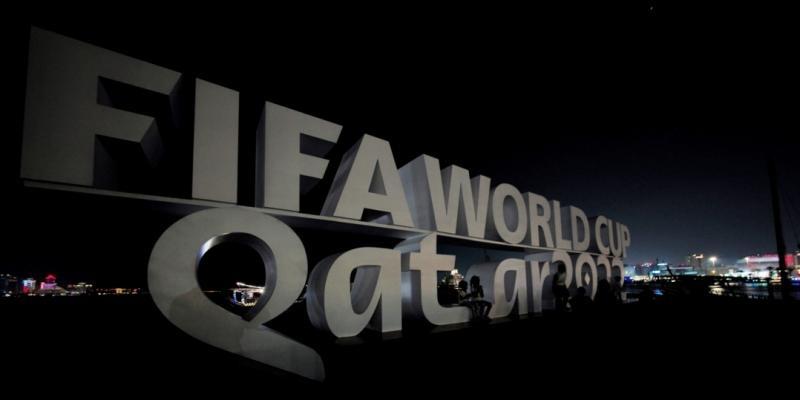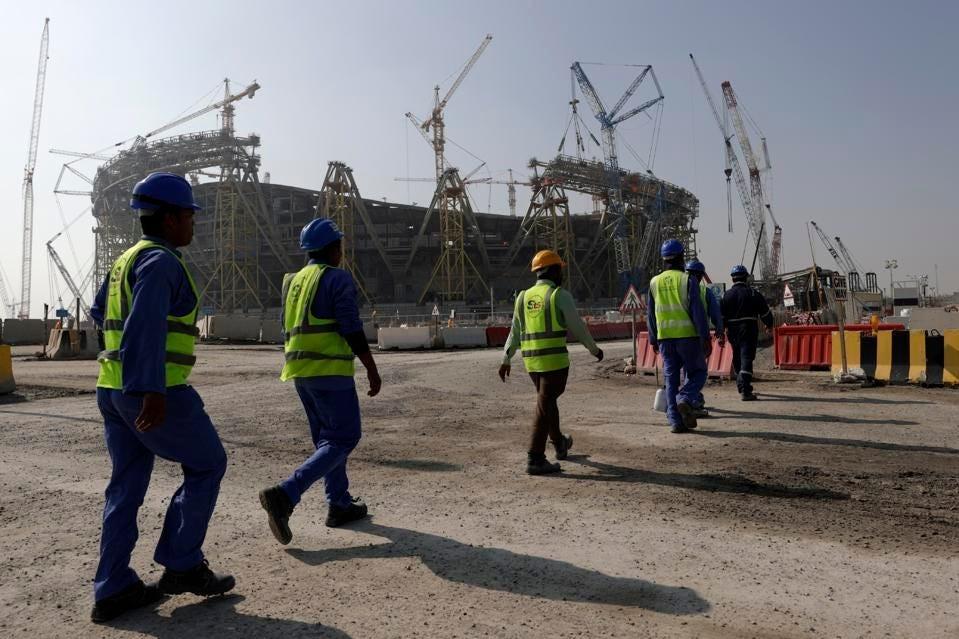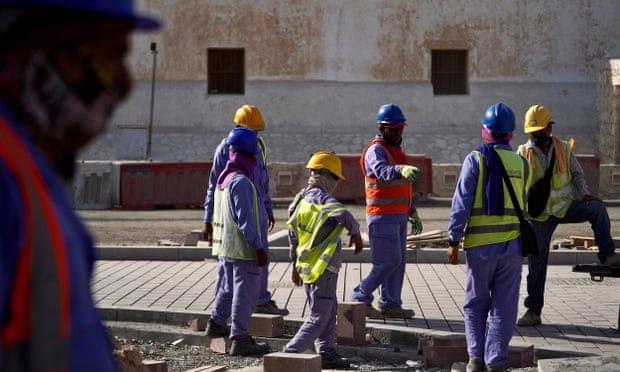Authorities gave inhabitants in one building in Doha’s Al Mansoura neighbourhood just two hours to evacuate on Wednesday at around 8 p.m, just a few days before the World Cup starts.

Qatar: Eviction of workers ahead of World Cup increases concerns
Workers who were evacuated from their houses told Reuters that Qatar has cleared out apartment buildings housing thousands of immigrant workers in the same districts in the heart of the city of Doha were attending soccer fans will reside during the World Cup.
The majority of the workers are Asian and African, and they claimed that more than a dozen residences were being evacuated and closed down by officials, causing them to find any refuge they could, even camped out on the sidewalk beside one of their old houses.
Less than four weeks remain before the beginning of the international football championship on November 20, which has garnered great public attention to Qatar’s handling of expatriate labours and its stringent social restrictions.
Authorities gave resist dents in one building in Doha’s Al Mansoura neighbourhood merely two hours to leave on Wednesday at around 8 p.m. Residents claimed that the building housed 1,200 people.Approximately at 10.30 p.m., local officials allegedly returned, ordered everyone out, and shut the building’s doors.
World Cup spectators will stay in residences in the neighbourhood, where dozens of mechanical diggers are parked in the streets, and the affected area has recently undergone extensive redevelopment, especially in the area surrounding Al-Mansoura.
https://www.hrw.org/news/2022/09/20/south-asian-states-should-back-remedy-qatars-migrant-workers
In 2021, Qatar’s population expanded by 13.2% as the nation hired thousands of migrant workers in preparation for the World Cup 2022, which Doha will host in November. Over 80% of Qatar’s 2.8 million people are migrants, mostly from the Asian countries of India, Pakistan, Bangladesh, Nepal, the Philippines, and African countries like Kenya and Uganda.
The evictions, according to a representative of the Qatari government, were planned “in line with continuing comprehensive and long-term efforts to re-organise regions of Doha” and had nothing to do with the World Cup.
The official stated that all have thereafter been placed in safe and reasonable lodging and that any requests to evacuate “would have been performed with due notice.”
“Residents found to be living in uninhabitable accommodations with no formal contracts are given the opportunity to move elsewhere in a reasonable timeframe,”
a Qatari administrator said to AFP.
“It keeps Qatar’s glitzy and wealthy facade in place without publicly acknowledging the cheap labour that makes it possible….“This is deliberate ghettoisation at the best of times. But evictions with barely any notice are inhumane beyond comprehension.”
Vani Saraswathi, director of projects at Migrant-Rights.org
FIFA, the organisation that oversees soccer worldwide, did not respond to a request for comment, and the World Cup organisers in Qatar directed questions to the government.
Qatar: The plight of migrant workers and the World Cup
More than 2 million migrants work in Qatar, making up about 95% of the country’s entire labour force. 100,000 domestic workers and about 1 million people work in the construction industry. Due to the enormous control that employers have over migrant workers under the kafala system, some workers are even prohibited from switching jobs, escaping abusive working conditions, or even leaving the country.

The Qatari administration has embarked on a vast development programme since being chosen to organize the World Cup in 2010: 8 stadiums, over 100+ hotels, a new airport, 3 subway systems, a fresh port, and scores of other infrastructure investments.
The working conditions for migrant labourers are appalling and exploitative from east to west across the world. But in the ten years since Qatar won the right to organize the World Cup, along been rampant exploitation and mistreatment with workers being subjected to forced labour, unpaid wages, and lengthy working hours.
Migrant construction labourers are often relatively impoverished, in stark contrast to Qatar’s incredible wealth. Qatar’s decision to host the World Cup has brought to the attention the situation of these workers on a global scale. The nation’s treatment of this labour over the past few years has had a patchy history.
Most migrant workers in the Gulf region have their legal status determined by the Kafala system. It was developed to provide cheap, abundant labour during a period of rapid economic growth, and supporters claim that it benefits local businesses and promotes development. Presently, it is becoming increasingly clear that exploitation is widespread with low salaries, unfavourable working conditions, and employee maltreatment frequently as the result of a lack of laws and protections for migrant workers’ rights.

The Qatari government agreed with the International Labor Organization (ILO) in 2017 in response to years of increasing international pressure, promising to address widespread labour exploitation and “align its laws and practises with international labour standards,” providing some solace for those who have given so much to the nation and its dream of hosting the World Cup.

https://www.hrw.org/news/2022/10/24/will-qatar-and-fifa-remedy-abuse-migrant-workers
Since Qatar gained the right to host the World Cup ten years ago, more than 6,500 migrant labourers from India, Pakistan, Nepal, Bangladesh, and Sri Lanka have died there, according to the Guardian.
Migrant workers have been crucial to maintaining the nation’s operations. In search of better economic prospects, thousands of people migrate to these countries each year, where exploitation and abuse become a common story. As the World Cup nears, we need to take into account the thousands of people who make up the backbone of this grand spectacle.













